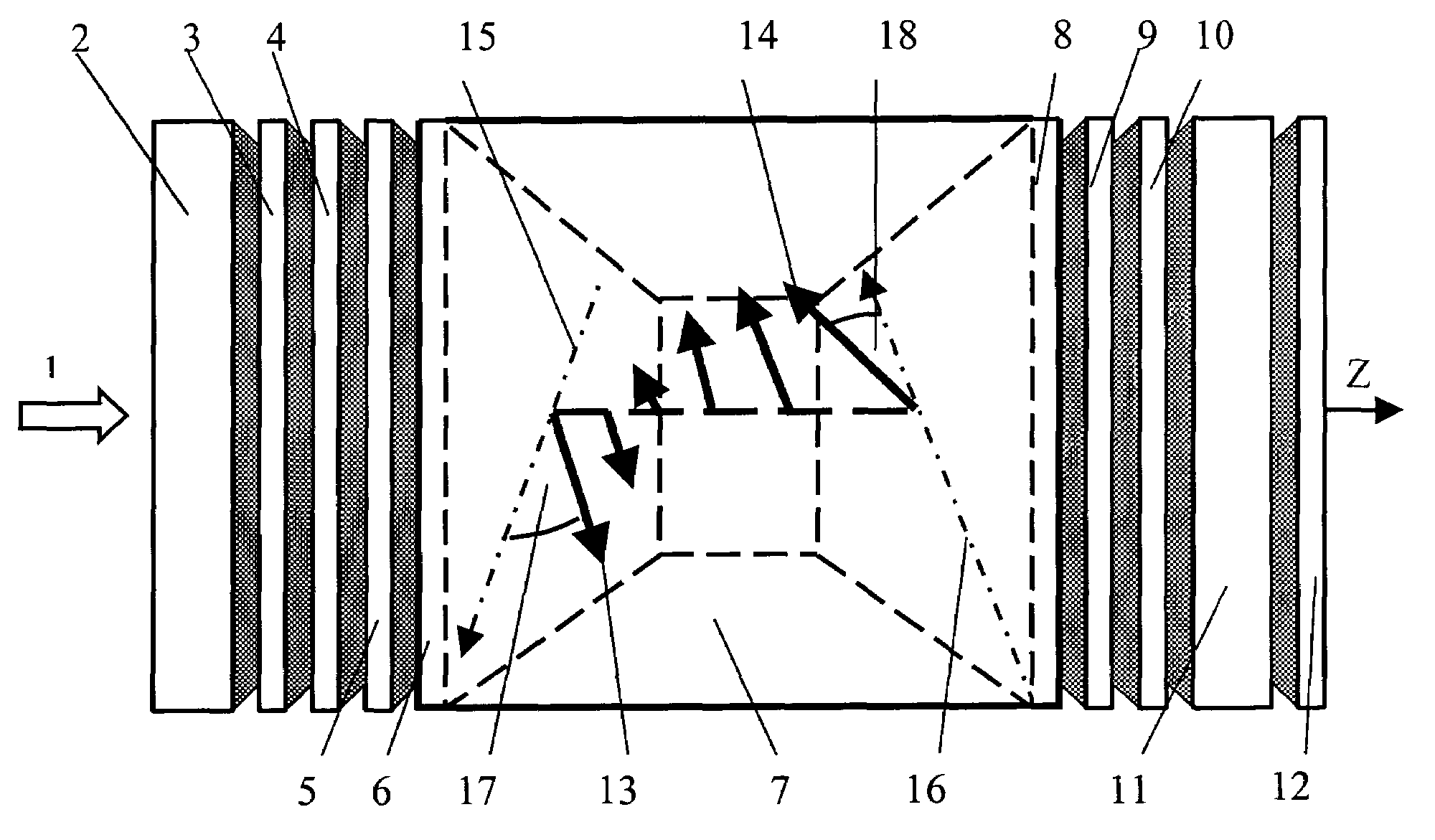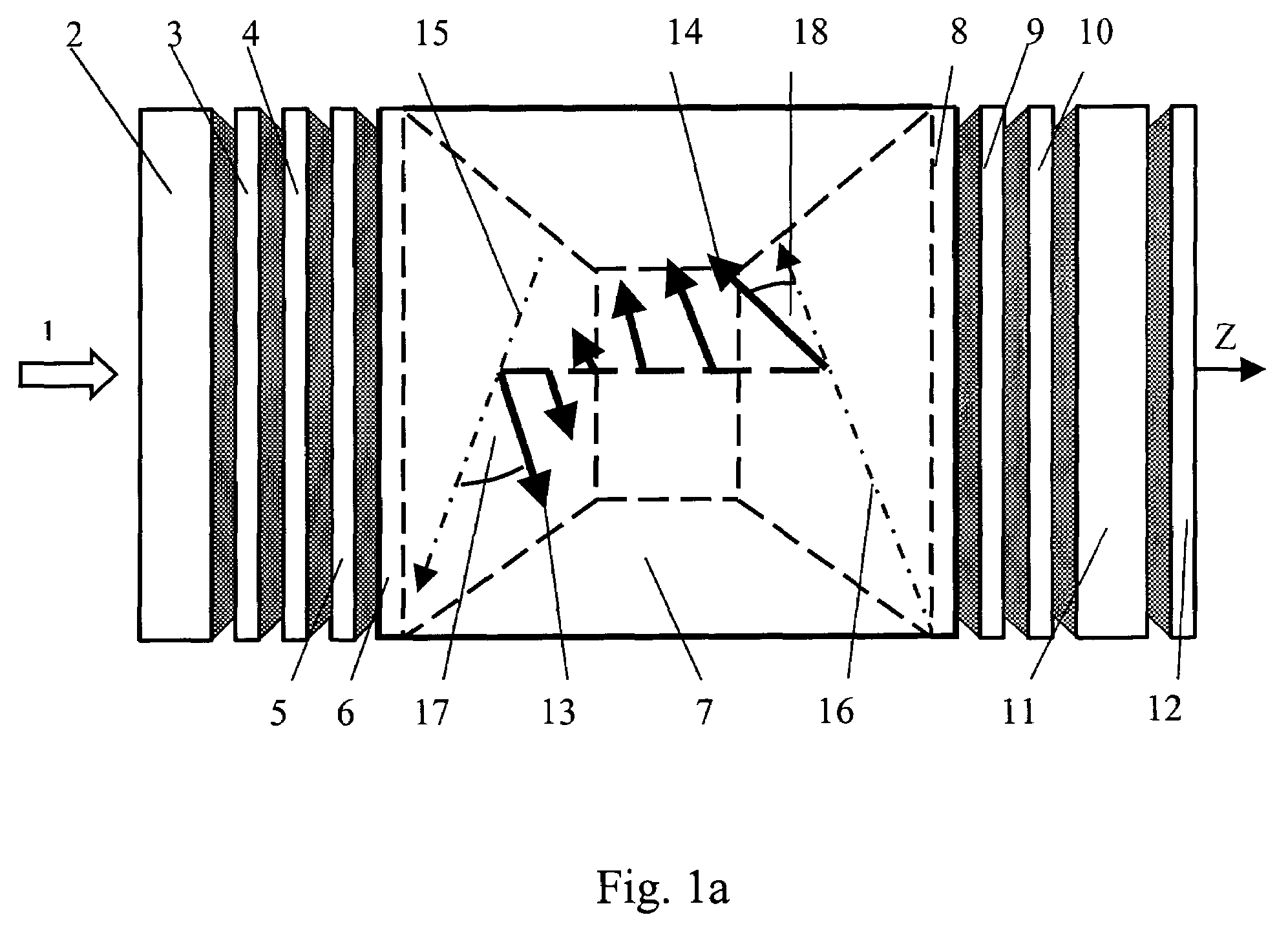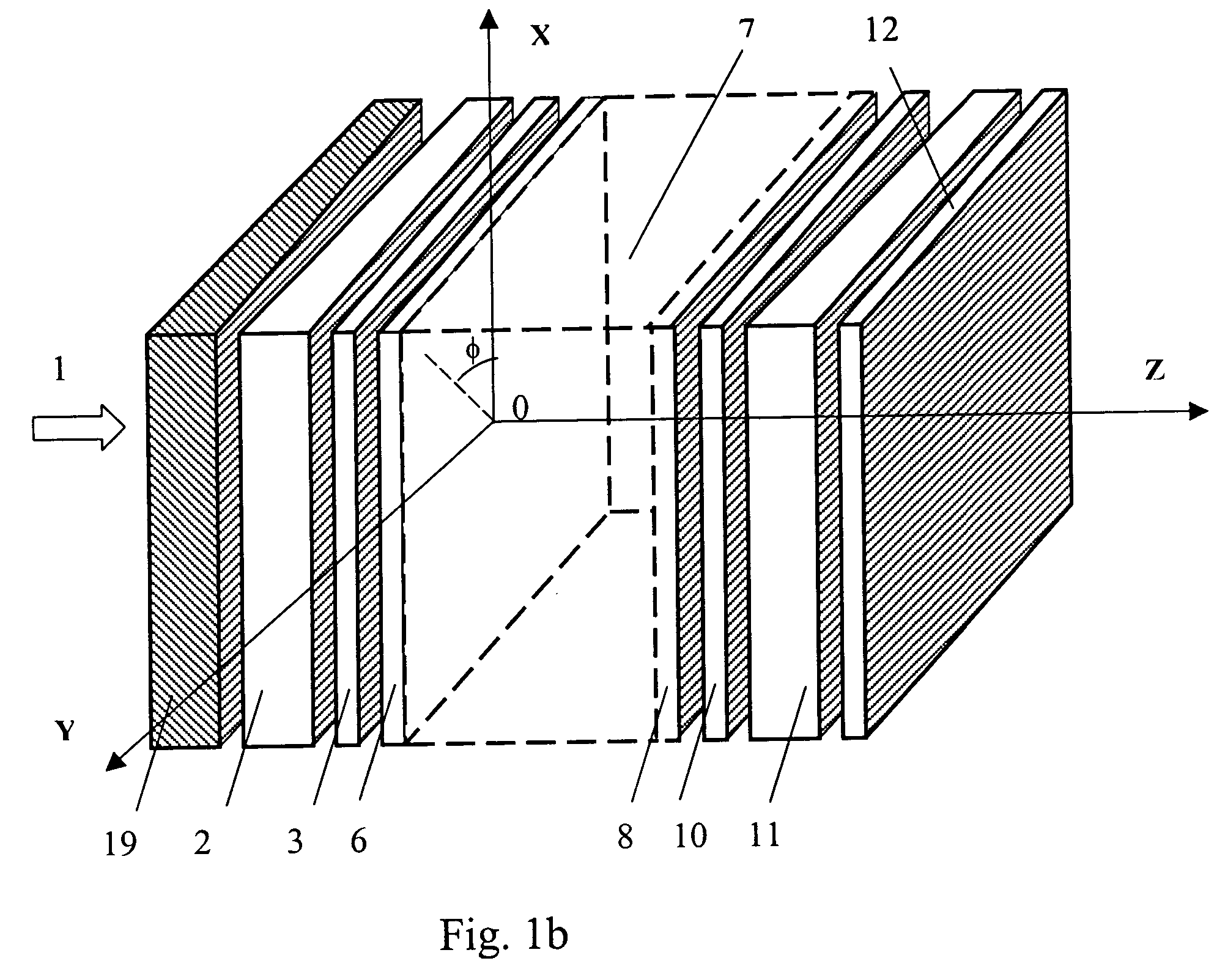Normally white, supertwist nematic liquid crystal display of reflective type
a liquid crystal display and supertwist technology, applied in liquid crystal compositions, instruments, chemistry apparatuses and processes, etc., can solve the problems of unknown optimum direction of optical transmission axis of the polarizer, prohibit the display from being used in applications that require high resolution, etc., to achieve large display thickness, large light transmission loss, and complex design
- Summary
- Abstract
- Description
- Claims
- Application Information
AI Technical Summary
Benefits of technology
Problems solved by technology
Method used
Image
Examples
Embodiment Construction
[0043]As used herein, the term “front” when used to describe glass layer, electrode, protective layer, polarizer, alignment layer, transmission axes and alignment directions means that the described element is located on the viewer side of the chiral nematic liquid crystal (CNLC) and faced to a light source.
[0044]As used herein, the term “rear” when used to describe glass layer, electrode, protective layer, alignment layer, transmission axes and alignment directions means that the described element is located on side of the liquid crystal opposite to the viewer and faced to a reflector.
[0045]Under Liquid Crystal Display (LCD) here and below we understand either a liquid crystal display or its part in the device.
[0046]As shown in FIG. 1a, an embodiment of this invention comprises a light source 1, a front glass plate 2, a front optically transparent electrode 3, a front optically transparent protective layer 4, front polarizer 5, a front alignment PI-layers 6, a chiral nematic liquid...
PUM
| Property | Measurement | Unit |
|---|---|---|
| twist angle | aaaaa | aaaaa |
| twist angles | aaaaa | aaaaa |
| twist angle | aaaaa | aaaaa |
Abstract
Description
Claims
Application Information
 Login to View More
Login to View More - R&D
- Intellectual Property
- Life Sciences
- Materials
- Tech Scout
- Unparalleled Data Quality
- Higher Quality Content
- 60% Fewer Hallucinations
Browse by: Latest US Patents, China's latest patents, Technical Efficacy Thesaurus, Application Domain, Technology Topic, Popular Technical Reports.
© 2025 PatSnap. All rights reserved.Legal|Privacy policy|Modern Slavery Act Transparency Statement|Sitemap|About US| Contact US: help@patsnap.com



